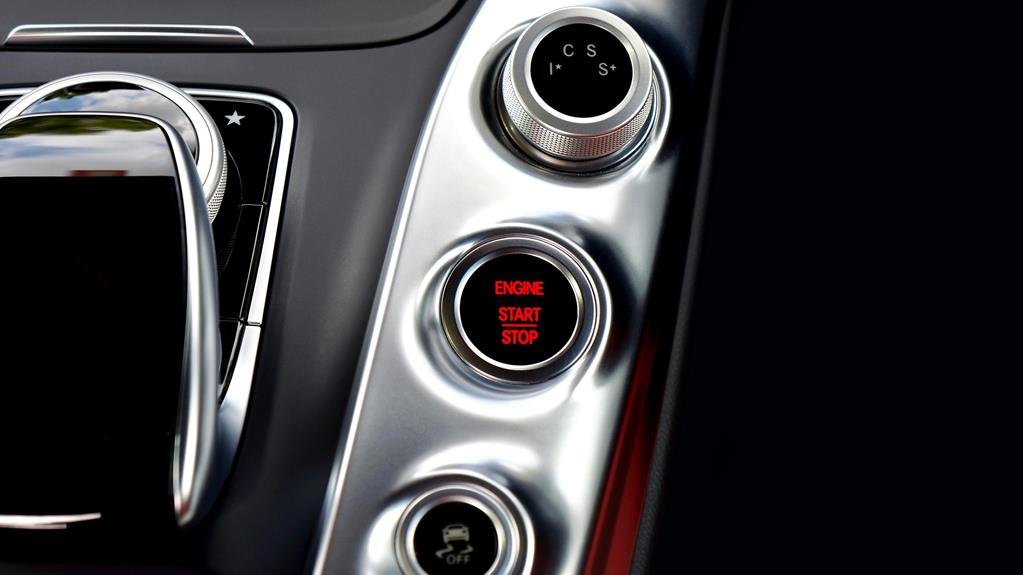Selecting the right car jump starter power bank is vital. Confirm it's compatible with your vehicle and has sufficient peak amperage. Charge the power bank following the manufacturer's guidelines, and maintain it by charging every three months. When jump-starting, securely connect the red clamp to the positive terminal and the black clamp to an unpainted metal surface on your car. Make sure the power bank is off during these connections. Start your engine in neutral or park without pressing the accelerator. Disconnect clamps in the reverse order and store the device in a dry, cool place. Explore more detailed steps and tips ahead.
Choose the Right Model
When selecting the appropriate model of a car jump starter power bank, you'll need to take into consideration the specific power requirements and compatibility with your vehicle. Start by examining a comparison guide to understand the features to take into account. For instance, check the peak amperage—this is important as it determines whether the jump starter can effectively start your car. Typically, larger engines require higher amperage.
Another important feature is the battery capacity, measured in milliampere-hours (mAh). A higher capacity means more jump starts before needing a recharge. You'll also want to make sure it has robust safety features, such as reverse polarity protection, over-current protection, and short-circuit protection. These are essential for both your safety and the longevity of the device.
The benefits of portable chargers extend well beyond just jump-starting your car. Look for models with USB ports, allowing you to charge mobile devices on the go. Some even come with built-in flashlights, enhancing their utility in emergency situations. By carefully taking into account these factors, you can choose a model that not only meets your vehicle's needs but also adds convenience to your life, giving you the freedom to drive without worry.
Charge the Power Bank
To ensure your car jump starter power bank is always ready for use, you must regularly charge it according to the manufacturer's guidelines. Proper power bank maintenance is vital for maintaining its longevity and reliability. Begin by consulting the user manual for specific charging instructions. Typically, a standard wall outlet is recommended, but there are alternative charging methods to contemplate, such as solar panels or car chargers, especially if you're frequently on the go.
Here are key steps to follow:
- Initial Charge: Always fully charge your power bank before its first use to calibrate the battery.
- Regular Charging: Keep the power bank topped up, ideally once every three months, to prevent battery degradation.
- Use Appropriate Chargers: Only use the charger provided or recommended by the manufacturer to avoid potential damage and ensure efficient charging.
- Monitor Charging: Pay attention to LED indicators or screen displays that show charging progress. Unplug once fully charged to prevent overcharging.
When troubleshooting charging issues, check all connections and confirm the power source is functional. If problems persist, consult customer support. Utilizing portable power sources like solar chargers can offer additional flexibility, ensuring your power bank remains a reliable tool for emergencies.
Connect to Car Battery
Attaching the power bank's jumper cables to your car battery is a straightforward process that requires careful attention to polarity and secure connections. First, identify the positive (usually red) and negative (usually black) terminals on both the car battery and the jumper cables. Confirm your portable charger is turned off before proceeding. Begin by connecting the red clamp to the positive terminal of the car battery. Next, attach the black clamp to a stable, unpainted metal surface on the car chassis, away from the battery. This serves as a grounding point and enhances safety.
Safety precautions are crucial during this process to prevent any accidental short circuits or sparks. Double-check that the clamps are secure and not touching each other or any other metal parts. If you encounter any issues, such as difficulty in attaching the clamps or sparks, refer to the troubleshooting section of your power bank's manual.
Having a reliable portable charger can be a lifesaver during emergency roadside assistance situations. By adhering to these steps, you ensure a secure connection, allowing you to proceed confidently. Remember, taking your time to make proper connections ensures the safety and effectiveness of the jump-start process.
Start the Engine
Once the clamps are firmly attached and you've double-checked all connections, you're ready to start the engine by turning the ignition key or pressing the start button. Make certain the car is in park or neutral and that you're not pressing the accelerator. This guarantees a smooth start and avoids sudden movements. If the engine doesn't start immediately, don't crank it for more than 3-4 seconds at a time. Allow the starter to rest for a few minutes between attempts.
Remember these key safety precautions:
- Confirm the jump starter is off before connecting or disconnecting.
- Avoid touching the metal parts of the clamps together.
- Keep the power bank away from moisture and extreme temperatures.
If the engine fails to start after a few attempts, refer to the jump starter's manual for troubleshooting tips. Issues could range from insufficient charge in the power bank to incompatible vehicles that require a higher starting current.
The jump starter power bank also has alternative uses. Many models can charge electronics or serve as a flashlight, making them versatile tools for your vehicle.
- Make certain the car is in park or neutral.
- Don't crank for more than 3-4 seconds.
- Refer to the manual for troubleshooting.
- Explore alternative uses and compatible vehicles.
Disconnect and Store
After successfully starting your engine, carefully disconnect the clamps in the reverse order of how they were attached. Begin by removing the black, negative clamp from the vehicle's battery, making sure no contact with any metal surfaces. Next, disconnect the red, positive clamp. This method of disconnecting safely guarantees you minimize any risk of sparks, short circuits, or electrical shocks.
Once the clamps are detached, inspect them and the power bank for any signs of damage or wear. Proper storage of your car jump starter power bank is essential for maintaining its longevity and reliability. Make sure that the power bank is fully charged before storing it, as this will keep the internal battery in good condition and ready for future use.
Store the power bank in a cool, dry place, away from direct sunlight, excessive heat, or moisture, which could degrade its components. Keep it in the provided case or a dedicated storage compartment in your vehicle, making sure it's easily accessible in case of emergencies. By following these steps, you maintain your jump starter power bank is always in best condition, providing you the freedom to tackle unexpected situations with confidence.
Frequently Asked Questions
Can a Car Jump Starter Power Bank Charge Other Devices Like Phones or Tablets?
Picture your jump starter as a superhero with a side gig. Yes, it can charge phones and tablets too. Thanks to its charging compatibility and power bank efficiency, you'll never be tethered to a wall outlet again.
How Long Does a Jump Starter Power Bank Typically Hold Its Charge?
A jump starter power bank typically holds its charge for 3-6 months, depending on its charging capacity and battery life. For best maintenance, check its storage duration regularly to make sure it's ready when you need it.
Are There Any Safety Precautions I Should Take When Using a Jump Starter Power Bank?
When using a jump starter power bank, prioritize safety measures. Follow best practices: wear protective gear, confirm correct polarity, and avoid wet conditions. These precautionary steps are essential, especially in emergency situations, to guarantee your safety and device longevity.
Can a Jump Starter Power Bank Be Used in Extreme Weather Conditions?
You wouldn't believe how resilient these devices are! A jump starter power bank guarantees winter performance is as reliable as a Swiss watch and maintains summer reliability under scorching conditions. Always check the manufacturer's guidelines for specific temperature ranges.
What Should I Do if the Jump Starter Power Bank Doesn't Start My Car?
If the jump starter power bank doesn't start your car, follow these troubleshooting steps: check connections, guarantee full charge. Consider alternative methods like a different power bank. Seek professional assistance for a thorough battery inspection if needed.



